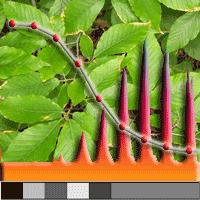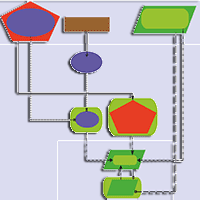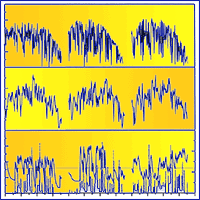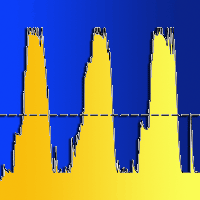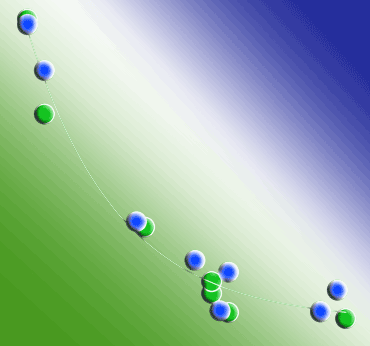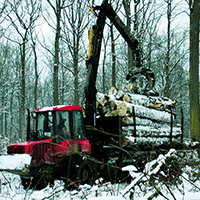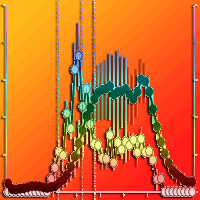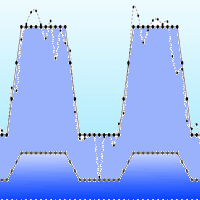
Comparative water balance study of forest and fallow plots
N Móricz (1) , C Mátyás (1), I Berki (1), E Rasztovits (1), Z Vekerdy (3), Z Gribovszki (2)
iForest - Biogeosciences and Forestry, Volume 5, Issue 4, Pages 188-196 (2012)
doi: https://doi.org/10.3832/ifor0624-005
Published: Aug 02, 2012 - Copyright © 2012 SISEF
Research Articles
Abstract
Increasing pressure on groundwater due to land use change (e.g., afforestation) and future climate change will alter the recharge of groundwater aquifers, causing shifts in water table levels and hence influencing the available groundwater resources. The effect of land use change on groundwater resources has initiated a major scientific debate during the last decades between foresters and experts in water management in Hungary and in several other countries. The aim of this study was to compare water balances of two different vegetation covers, a groundwater dependent oak forest and a nearby fallow area in the Hungarian Lowland. Water balance components for an oak and a fallow plots, exposed to similar weather conditions and with similar soils, were estimated and compared by calibrating the Hydrus 1-D model using measured soil water content and groundwater levels. The difference in the groundwater consumption was analyzed in details during dry and wet growing seasons. Transpiration at the fallow plot was only about two-thirds of that in the oak forest, while groundwater consumption was three times higher in the forest than at the fallow plot throughout the two-year study. During the dry growing season, the proportion of groundwater use from the total transpiration reached up to 90% at the oak plot. According to the model, in the dry growing season in 2007 both vegetation covers relied significantly on groundwater resources, while in 2008 the consumption of groundwater was notably reduced due to the wet weather at both plots.
Keywords
Authors’ Info
Authors’ address
C Mátyás
I Berki
E Rasztovits
Institute of Environmental and Earth Sciences, University of West Hungary, Sopron (Hungary)
Institute of Geomatics and Civil Engineering, University of West Hungary, Sopron (Hungary)
Faculty of Geo-Information Science and Earth Observation (ITC), University of Twente, Enschede (Netherlands)
Corresponding author
Paper Info
Citation
Móricz N, Mátyás C, Berki I, Rasztovits E, Vekerdy Z, Gribovszki Z (2012). Comparative water balance study of forest and fallow plots. iForest 5: 188-196. - doi: 10.3832/ifor0624-005
Academic Editor
Marco Borghetti
Paper history
Received: Nov 19, 2011
Accepted: Jun 30, 2012
First online: Aug 02, 2012
Publication Date: Aug 29, 2012
Publication Time: 1.10 months
Copyright Information
© SISEF - The Italian Society of Silviculture and Forest Ecology 2012
Open Access
This article is distributed under the terms of the Creative Commons Attribution-Non Commercial 4.0 International (https://creativecommons.org/licenses/by-nc/4.0/), which permits unrestricted use, distribution, and reproduction in any medium, provided you give appropriate credit to the original author(s) and the source, provide a link to the Creative Commons license, and indicate if changes were made.
Web Metrics
Breakdown by View Type
Article Usage
Total Article Views: 59753
(from publication date up to now)
Breakdown by View Type
HTML Page Views: 49680
Abstract Page Views: 3934
PDF Downloads: 4529
Citation/Reference Downloads: 31
XML Downloads: 1579
Web Metrics
Days since publication: 4891
Overall contacts: 59753
Avg. contacts per week: 85.52
Citation Metrics
Article Citations
Article citations are based on data periodically collected from the Clarivate Web of Science web site
(last update: Mar 2025)
Total number of cites (since 2012): 17
Average cites per year: 1.21
Publication Metrics
by Dimensions ©
Articles citing this article
List of the papers citing this article based on CrossRef Cited-by.
References
Phases of blown-sand movements in the North-East part of the Great Hungarian Plain. Acta geographica ac geologica et meteorologica, Debrecina 20: 5-33.
Gscholar
Evaporation into the atmosphere: theory, history, and applications. D. Reidel, Hingham MA, USA, pp. 299.
Gscholar
Climate change 2007: synthesis report. Contribution of Working Groups I, II and III to the Fourth Assessment Report of the Intergovernmental Panel on Climate Change, Geneva, Switzerland.
Gscholar
FAST - simulation models of gaseous exchange in Scots pine. In: “Structure and function of northern coniferous forests” (Persson T ed). Ecological Bulletins 32: 505-523.
Gscholar
Modellierung der Evapotranspiration im System Boden-Pflanze-Atmosphäre. Züricher Geographische Schriften, Heft 67, Geographisches Institut ETH, Zürich, Switzerland, pp. 128.
Gscholar
Groundwater studies in the Assiniboine River drainage basin-part II: hydrologic characteristics of phreatophytic vegetation in south-central Saskatchewan. Bull. Geol. Surv. Can. 139.
Gscholar
Evaporation and environment. In: “The state and movement of water in living organisms” (Fogg GE ed). 19th Symp. Soc. Exp. Biol. Cambridge, UK. The Company of Biologists, pp. 205-234.
Gscholar
National Forest Inventory Database. Ministry of Rural Development, Budapest, Hungary.
Gscholar
Use of soil texture, bulk density, and the slope of the water retention curve to predict saturated hydraulic conductivity. Transactions American Society of Agricultural Engineers 41 (4): 983-988.
Gscholar
The Hydrus-1D software package for simulating the one-dimensional movement of water, heat, and multiple solutes in variably-saturated media. Version 3.0, HYDRUS Software Series 1, Department of Environmental Sciences, University of California, Riverside, CA, USA, pp. 270.
Gscholar
A numerical model for water and solute movement in and below the root zone. Research Report No 121, U.S. Salinity Laboratory, USDA, ARS, Riverside, California, USA, pp. 221.
Gscholar
The RETC code for quantifying the hydraulic functions of unsaturated soils, Version 1.0. EPA Report 600/2-91/065, U.S. Salinity Laboratory, USDA, ARS, Riverside, California, USA, pp. 93.
Gscholar
Die Interception des Niederschlags in landwirtschaftlichen Beständen. Schriftenreihe des DVWK 57: 1-53.
Gscholar
Method of estimating groundwater supplies based on discharge by plants and evaporation from soil - results of investigation in Escalante Valley, Utah. US Geological Survey, Water Supply Paper 659-A: 1-105.
Gscholar


